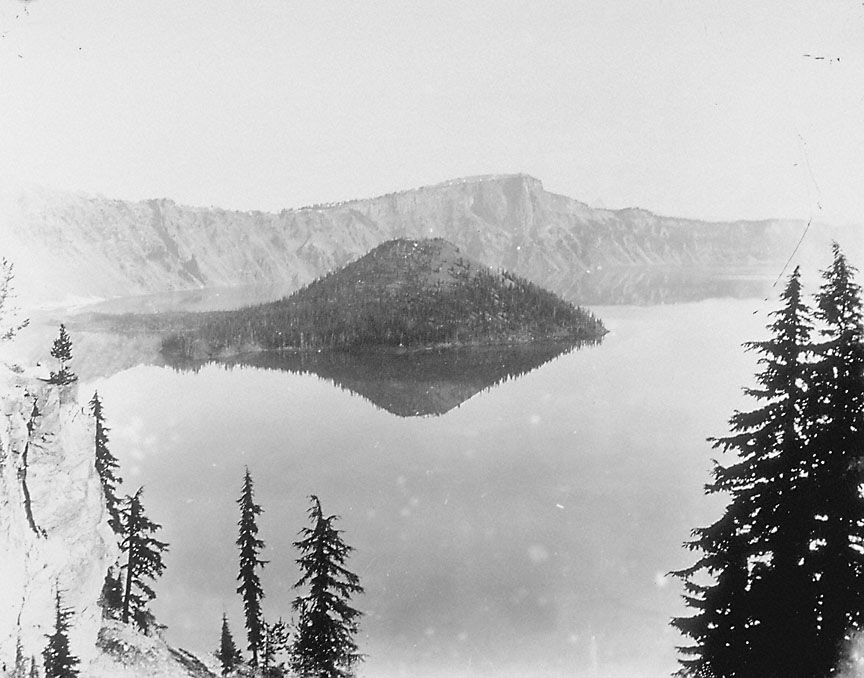- Catalog No. —
- OrHi 21506
- Date —
- 1885
- Era —
- 1881-1920 (Industrialization and Progressive Reform)
- Themes —
- Environment and Natural Resources, Government, Law, and Politics
- Credits —
- Oregon Historical Society
- Regions —
- Cascades
- Author —
- M.M. Hazeltine
Crater Lake, 1885
This photograph, taken in 1885, was one of the first taken of this legendary battleground. Native legend tells of a great war between Llao, Chief of the Below World, and Skell, Chief of the Above World, when great explosions sent rocks flying, set the forests afire, and created seven days of darkness, only to be lighted by periods of explosive flames discharged from two mountain peaks. During this battle, Llao stood upon what would later be named Mount Mazama and Skell atop Mount Shasta. The climax of the great battle came when Mount Mazama collapsed within itself, contributing to Llao’s defeat. The collapse of the mountain formed a great caldera (crater) that was eventually filled with rain and melted snow, creating a deep, crystal blue lake. Today, local Native Americans continue to hold the mountain and lake as sacred ground.
Gold prospector John Hillman stumbled upon the lake in 1853. Hillman’s donkey came to a standstill at the top of the mountain, preventing the two from toppling over the edge and into the clear blue water. On August 4, 1869, sightseers from Jacksonville named the nation’s deepest body of water Crater Lake. In August 1885, mountain climber William Steel and a colleague were the first to explore Wizard Island, an 800-foot-tall cone-shaped island about a quarter-mile offshore.
The Mazamas, a mountaineering club from Portland founded in 1894, later climbed the mountain that protected Crater Lake, and hearing that the mountain was still unidentified, they named it Mount Mazama. Steel, one of the founders of the Mazamas, spent nearly two decades lobbying the U.S. Government to protect the lake and the surrounding forests. President Theodore Roosevelt signed a bill on May 22, 1902 making Crater Lake and its surrounding 159,360 acres the nation’s sixth national park.
Further Reading:
Deur, Douglas. “A Most Sacred Place: The Significance of Crater Lake among the Indians of Southern Oregon.” Oregon Historical Quarterly 103, 2002: 18-49.
Larson, Douglas W. “Probing the Depths of Crater Lake: A Century of Scientific Research.” Oregon Historical Quarterly 100, 1999: 288.
Written by Robert Donnelly, © Oregon Historical Society, 2003.
